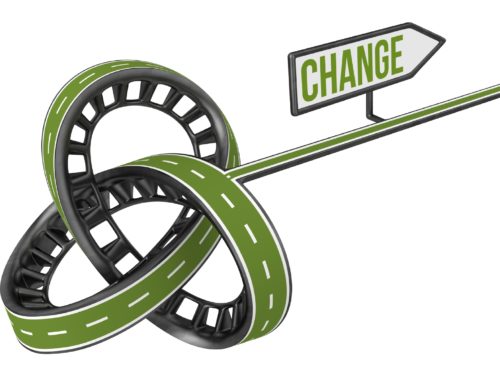We all want things to be better in our business. But for things to be better, they have to be different. And for things to be different, they have to change.
Most of the leaders and managers with whom I’ve worked over the years tell me the same thing – the changes they need to make in their operation would be easier if only everyone bought in.
What is Buy-In?
For some, buy-in is that motivational moment of unity when everyone emotionally or physically locks arms to slay the monster that is impeding your journey to greatness.
For others, it is the quiet confidence that accepts the challenges ahead and acts to overcome them.
Either way, having buy-in reduces the drama and makes your efforts less complicated. Your team can more effectively navigate the difficulties that always arise if everyone has bought in to the change.
Here are four ideas you can use the next time you need buy-in for a change regardless of its size and complexity.
1. Communicate. Leaders define both current reality and the desired future. Your communication around change must include the cost of staying the same compared to the risk of failing or opportunity to succeed. Your also should provide people with a reasonable picture of what will be different for them and an explanation of how success will be measured.
This isn’t a onetime activity. The Rule of 7 in the advertising world says that potential buyers – and that’s what you are looking for with your change – have to see an ad at least seven times before it starts to sink in.
2. Involve. People support what they help create, and no one ever argues with their own ideas.
The ultimate involvement is allowing your team to recommend the change, but that’s not always practical. The next best option is to allow people to participate in how the change is implemented. Doing that provides additional control that minimizes people feeling that you are doing something to them.
The final option is to simply provide the opportunity for people to give their ideas and ask questions.
Whatever involvement strategy you use, remember that there is a certain level of discomfort that comes with even positive change that is in your control. So the more you can involve people, the more likely you are to get buy-in.
3. Provide support and structure. A lot of the change gurus out there focus exclusively on the soft aspects of getting buy-in for change. They assume that people will buy in when they understand the legitimate business need.
That’s clearly important, but change can go bad when motivated people didn’t have the resources and tools they needed to succeed. People have heard promises before. They want to see that you are giving them the tools they need to succeed.
4. Commit to see it through. Your team gets frustrated and your credibility suffers when change is never finished.
It’s easy for you to turn your attention to the next thing once a change is initiated. The problem is that your team takes their cues from the attention you provide. They assume it isn’t important if you are off on a different tangent.
You are the leader. You focus the energy and effort. Most important, it is your responsibility to take proactive steps to get buy-in for change.





